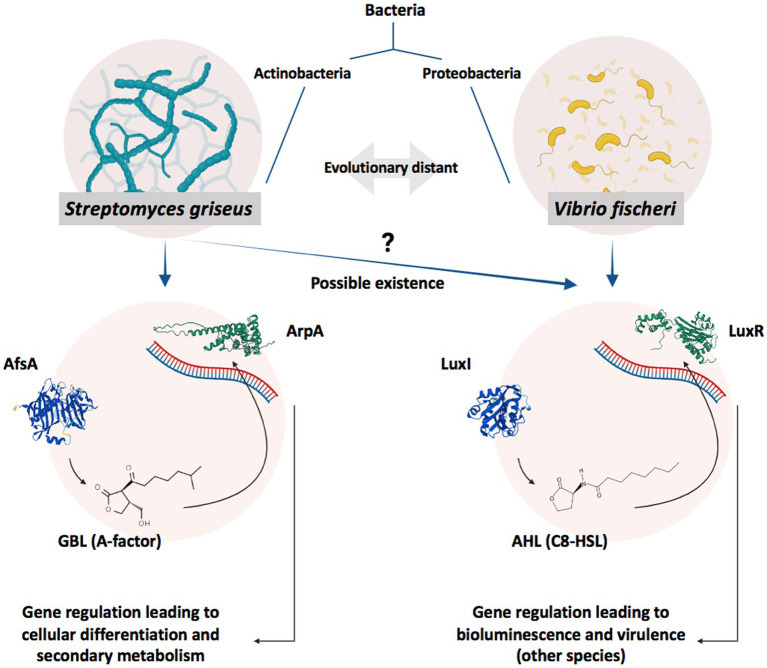Figure 1.
Schematic illustration of GBL- and AHL-based gene regulation systems. GBLs and AHLs, produced by AfsA and LuxI, act as autoinducers in Actinobacteria and Proteobacteria to regulate the expression of specific genes by affecting their relevant receptors, ArpA and LuxR, respectively, when reaching a specific concentration (reflection of the cell density/population) in a process known as QS (Polkade et al., 2016). A specific level of bacterial population and, subsequently, autoinducer concentration in V. fischeri leads to bioluminescence (Engebrecht et al., 1983), while in Streptomyces species, it activates cellular differentiation or antibiotic production (Takano, 2006). Bacterial species possessing AfsA/ArpA and LuxI/LuxR protein families are evolutionary distant; however, AfsA and ArpA protein families are considered analogs to LuxI and LuxR protein families, respectively. Regarding the signaling molecules, GBLs and AHLs share structural similarities. Both molecule families possess a gamma-lactone moiety combined with a tail of the carbon chain; however, GBLs usually possess an extra-short branch on the lactone ring while missing the amide bond in the carbon tail. It is worth noting that more structurally different GBLs (Misaki et al., 2022) and AHLs (Schaefer et al., 2008) have also been discovered while all sharing the lactone moiety.

